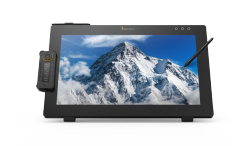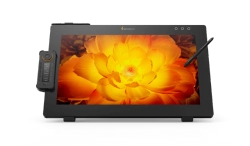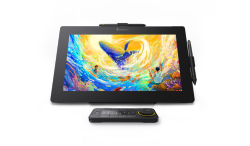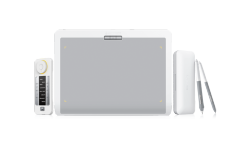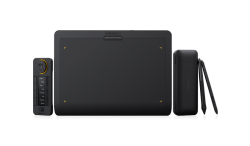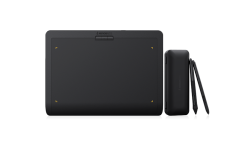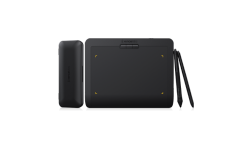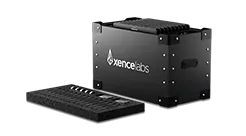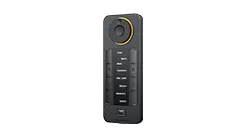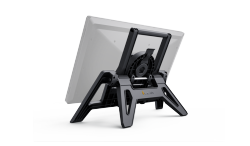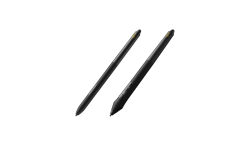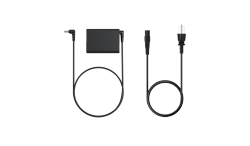Perspective drawing is a fundamental skill that allows artists to create depth, dimension, and a sense of realism in their two-dimensional artworks. Whether you're a novice or an experienced artist, understanding the principles of perspective can significantly enhance your drawing skills. And if you’re a beginner, you might not understand how to start combining drawing and perspective. In this article, we'll explore the world of perspective drawing, from basic terms to advanced techniques, and introduce you to a tool that can streamline your practice.
Why Perspective Techniques Are Crucial in Painting
Perspective drawing is the foundation of creating immersive and captivating paintings. It enables artists to represent three-dimensional objects and scenes on a two-dimensional surface, resulting in artwork that feels realistic and engaging.
In painting, perspective techniques are essential for conveying depth and space. Whether you're painting a serene landscape, a bustling cityscape, or a still life, perspective allows you to create a convincing sense of depth and spatial relationships. Without perspective, your artwork may appear flat and lack the visual impact that depth provides.
Perspective Terms You Should Understand
Before diving into practical exercises, let's acquaint ourselves with some essential perspective terms:
Vanishing Point: This is the point on the horizon where parallel lines seem to converge. In one-point perspective, all parallel lines converge to a single vanishing point, while in two-point perspective, lines converge to two different points.
Horizon Line: The horizon line represents the viewer's eye level and divides the scene into the sky and the ground. Its placement significantly influences the composition and mood of your artwork.
Convergence: Convergence refers to parallel lines appearing to meet at a vanishing point. It's a fundamental principle for creating the illusion of depth in perspective.
Orthogonal Lines: Orthogonal lines are diagonal lines that radiate from the vanishing point, helping construct the framework of objects in perspective.
Receding Lines: These lines move away from the viewer and converge toward vanishing points. They are crucial for depicting objects and scenes realistically.
Depth: Depth is the perception of distance within a drawing, achieved through the application of perspective techniques.
One-Point Perspective: In this method, all parallel lines converge to a single vanishing point, often used for scenes with a straightforward viewpoint.
Two-Point Perspective: This technique involves lines converging to two different vanishing points and is commonly used for more dynamic compositions, such as architectural drawings.
Understanding these terms provides you with the vocabulary and framework necessary for mastering perspective drawing.
Practice perspective drawing Skills
To enhance your skills, consider the following exercises when drawing on perspective:
One-Point Perspective Exercise: Start with a simple cube drawn in one-point perspective. Experiment with adding depth and dimension using orthogonal lines and a vanishing point.
Two-Point Perspective Challenge: Move on to two-point perspective drawing referencing a building or a cityscape (city perspective drawing). Pay attention to the placement of vanishing points and line convergence.
Geometric Space Construction: Create complex geometric shapes and objects in perspective, such as spheres and cylinders. This exercise sharpens your understanding of spatial relationships.
Still Life in Perspective: Apply your perspective skills to a still life composition. Arrange objects to demonstrate depth and spatial connections.
The Key to Efficient Practice - The Use of Shortcut Keys
Modern technology offers tools to streamline perspective drawing. The Xencelabs Quick Keys remote is one such tool that can significantly enhance your efficiency and productivity.
This versatile accessory complements your drawing tablet and allows you to customize shortcuts and commands tailored to your needs. Assign frequently used functions, like adjusting brush size, switching drawing modes, or toggling gridlines, to the touch of a button.
What sets the Xencelabs Quick Keys remote apart is its seamless integration with popular drawing software, making it a valuable asset for artists of all levels. Whether you use Adobe Photoshop, Corel Painter, or other digital art platforms, this accessory simplifies the technical aspects of perspective drawing.
For those seeking to elevate their perspective drawing, the Xencelabs Pen Tablet Medium Bundle includes the Xencelabs Quick Keys remote. This comprehensive package offers everything you need, from a high-precision pen tablet to customizable shortcut keys.
Incorporating the Xencelabs Quick Keys remote into your workflow enhances your efficiency and empowers you to focus on the creative aspects of your art. By simplifying the technical aspects of perspective drawing, you can devote more time and energy to your artistic vision.
Conclusion
In conclusion, perspective drawing is a powerful tool that can transform your artwork from flat and uninspiring to dynamic and visually captivating. Mastering perspective terms, practicing your skills, and using tools like the Xencelabs Quick Keys remote can unlock the full potential of spatial drawing.
Continuously improve your basic skills, aligning them with your specific design field, whether you're an illustrator, concept artist, or graphic designer. Drawing perspective art is a versatile skill that elevates your work and opens new creative possibilities. Expand your design vision based on your interests and goals, and you'll find that perspective drawing is a fundamental skill that enhances your artistic journey.
Incorporate these techniques, tools, and principles into your artistic practice, and you'll discover that perspective drawing is not just a skill but also a gateway to limitless creative possibilities. Embrace the power of spatial drawing, and watch your artwork come to life in ways you never thought possible. As you explore and refine your perspective drawing skills, you'll find that the world of art and design becomes an open canvas for your imagination, ready to be transformed into stunning and immersive creations.


